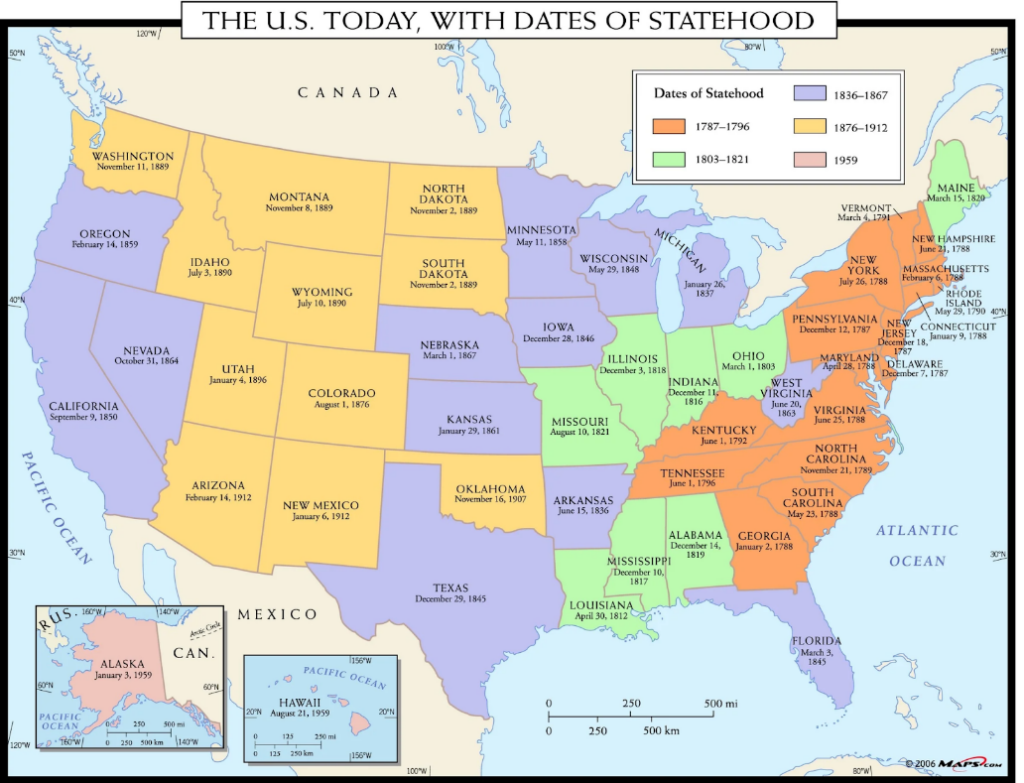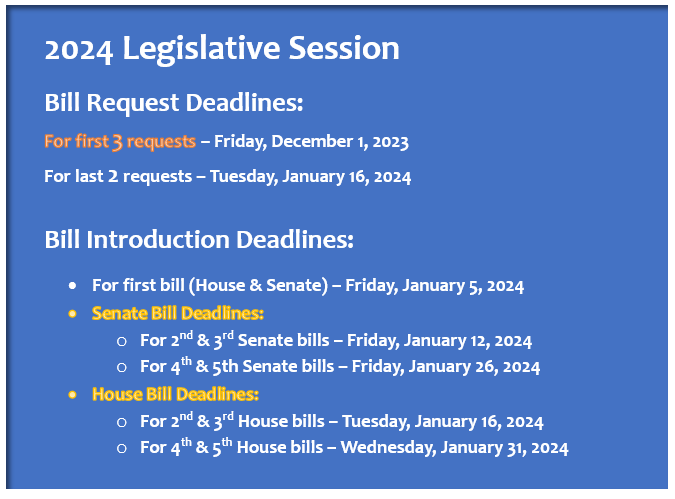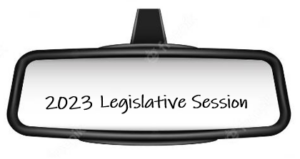Several legislative committees held public meetings since the end of the last legislative session to discuss topics relevant to Colorado and to recommend legislation to  the Legislative Council committee for approval for introduction in 2024. In this article we’re providing summaries of four of 12 committees and their recommended legislation. This is the first of three articles summarizing this interim’s committee actions. The Legislative Council met on Wednesday, November 15, to review interim committee legislation proposals. Click here to listen to the Legislative Council meeting.
the Legislative Council committee for approval for introduction in 2024. In this article we’re providing summaries of four of 12 committees and their recommended legislation. This is the first of three articles summarizing this interim’s committee actions. The Legislative Council met on Wednesday, November 15, to review interim committee legislation proposals. Click here to listen to the Legislative Council meeting.
Colorado Health Insurance Exchange Oversight Committee
The committee met twice during the interim and heard various updates on the insurance marketplace around the state. In particular, the committee heard updates from:
- Connect for Health Colorado (the state health benefit exchange) regarding financial and enrollment assistance available for customers, the exchange’s preparations for open enrollment, how the exchange has assisted customers in maintaining coverage after Friday Health Plans left the market, and requested technical changes to the laws governing the exchange, its board of directors, and the committee;
- The Department of Health Care Policy and Financing concerning the process to unwind Medicaid from expansions under the public health emergency and its efforts, through a health education campaign supported by the exchange board and the Medicaid to Marketplace Bridge, to help enrollees losing eligibility for Medicaid to transition to private health coverage plans available through the exchange; and
- The Division of Insurance concerning the Affordable Care Act 1332 waiver, preliminary 2024 health insurance rates, and the division’s rate review timeline.
The committee recommended one bill to the Legislative Council to modify provisions governing the state health benefit exchange by eliminating the requirement for the board of directors of the exchange to submit a report on the development of the exchange to the Governor and the General Assembly by January 15, and instead requiring the report to be submitted annually and to address open enrollment; requiring the board to also present an open enrollment update to specified legislative committees during each legislative session; requiring the exchange, rather than the board, to annually present to the committee the exchange’s financial and operational plans and the major actions taken by the board; modifying the number of meetings of the committee during the interim; and eliminating from the committee membership appointees who are members of the legislative audit committee.
Colorado Youth Advisory Council Review Committee
The committee met three times during the interim. It heard presentations from its student members about gun violence, hygiene products, Asian American and Pacific Islander history, gender-affirming care, non-legal name changes, and increasing the number of school psychologists. The committee had six bills drafted and recommended the following three bills to the Legislative Council.
- Bill A – Non-legal Name Changes. The bill requires public schools to use a student’s preferred name if requested by the student. A school’s refusal to use a student’s preferred name is deemed a form of discrimination. It creates a task force in the department of education to examine existing school policies and provide recommendations to schools on how to best implement student non-legal name change policies.
- Bill B – School Mental Health Professional Loan Repayment Program. The bill creates a loan repayment program in the department of higher education to provide loan repayment of up to $10,000 to eligible school counselors, school psychologists, and school social workers who provide mental health services to students who have limited access to mental health services.
- Bill C – Availability of Youth Gender-affirming Care Training. The bill requires the Department of Public Health and Environment to conduct a gender-affirming health-care provider study. The bill outlines required topics for the study, including the type and availability of gender-affirming health-care services available to patients; issues impacting gender-affirming health-care providers and facilities; and the availability of insurance coverage for different types of treatment.
Colorado’s Child Welfare System Interim Study Committee
The committee met five times during the 2023 interim. It requested 10 bills be drafted and recommended the following five bills to the Legislative Council:
- Bill A – Concerning increasing support for kinship foster care homes. The bill makes changes to kinship care in Colorado, including expanding emergency assistance for kinship homes to include goods for basic care; establishing the process for a kinship home to apply for certification; allowing a kinship home to opt out of the certification process but remain eligible for supports; and making kinship homes eligible for the same reimbursement and supports as foster care homes.
- Bill B – Concerning establishing a children’s behavioral health statewide system of care. The bill requires the creation of a statewide comprehensive children’s behavioral health system of care to serve as the point of access to address the behavioral health needs of children and youth up to 21 years of age who have mental health disorders, substance use disorders, co-occurring behavioral health disorders, or intellectual and developmental disabilities, regardless of payer, insurance, and income.
- Bill C – Concerning addressing the high-acuity crisis for children and youth in need of residential care. The bill requires the Department of Health Care Policy and Financing, the Behavioral Health Administration, and the Department of Human Services to develop a high-acuity system of care for children and youth who are less than 21 years of age and who have complex behavioral health needs.
- Bill D – Concerning measures to increase accessibility provided to persons who are involved in matters regarding a child’s welfare. The bill requires that certain services provided to children or their families comply with the provisions of Title VI of the federal “Civil Rights Act of 1964” if they are provided by a county department, city and county, or a private-entity contractor, including access to services in a primary language for a person with limited English proficiency. The bill also requires a court to provide language access, including translation and interpretation services, to parties in dependency and neglect cases for those with limited English.
- Bill E – Concerning measures to enhance child welfare system tools. The bill requires the state Department of Human Services to develop and implement a screening process for county departments of human or social services to follow in responding to reports and inquiries to the hotline system. The screening must include questions about domestic violence and a procedure to determine demographic information. The bill also requires an audit of the Colorado family safety assessment and the Colorado family risk assessment on or before January 15, 2025.
Legislative Oversight Committee Concerning Tax Policy
The committee met five times during the interim. It heard presentations on the affordable housing tax credit, the Attorney General’s opinion concerning the Tyler v. Hennepin County case, affordable housing for low income individuals, the Department of Local Affairs and the Office of Economic Development and International Trade’s administration of Proposition 123, and property tax “circuit breakers”.
Additionally, the state auditor’s office presented tax expenditure evaluations. The committee also set forth the scope of tax policies to be considered by its subordinate Task Force Concerning Tax Policy to include applying the state income tax to federal adjusted gross income rather than federal taxable income, the construction of affordable housing units, options for addressing the affordability of home ownership and rental housing, and the creation of a permanent fund associated with the state’s levy and collection of severance tax. The committee requested 10 bills for drafting and recommended five to the Legislative Council for introduction:
- Bill A – Adjustment of tax expenditures. The bill eliminates 15 infrequently used tax exemptions, deductions, and credits. It also modifies several tax expenditures, including increasing the health care preceptors tax credit, increasing the wildfire mitigation measures tax credit, requiring tax-free entities to file a tax return, and expanding a sales tax exemption to include modular homes.
- Bill B – Process for issuance of a treasurer’s deed for property subject to a property tax lien. The bill establishes a process by which the lawful holder of a certificate of purchase of a tax lien may apply for a public auction for the sale of a certificate of option for treasurer’s deed. If the public auction results in an “overbid”, meaning the purchaser of the sale of a certificate of option for treasurer’s deed pays an amount in excess of the value of the tax lien, then the amount of the overbid must be paid in order of recording priority to junior lienors who have filed a notice of intent to redeem. After payment to all lienors, any remaining overbid must be paid to the owner of the property subject to the tax lien. By providing for payment of any remaining overbid amount to the property owner, the bill brings Colorado law into compliance with the United States Supreme Court’s recent decision affirming a property owner’s constitutional right to the value of their property in excess of their tax debt.
- Bill C – Property tax treatment of real property that is used to provide lodging. The bill provides that a short-term rental property leased for short-term stays for more than ninety days in a property tax year is classified as lodging property.
- Bill D – Analysis of tax policy by the state legislative branch. The bill modifies requirements for evaluating state tax expenditures, requires the state auditor to prepare an annual report on federal tax law and changes that have significant impact on the state’s tax base, and extends the Legislative Oversight Committee Concerning Tax Policy and the Task Force Concerning Tax Policy.
- Bill E – Reinstatement of an income tax credit to help income-qualified seniors afford housing. The bill reinstates a refundable income tax credit that was available for income tax year 2022 so that the credit is available for income tax year 2024. The credit is available for a person who is sixty-five years of age or older at the end of 2024, has an adjusted gross income that is $75,000 or less for a single return and $150,000 or less if filing a joint return, and has not claimed the senior property tax exemption for the 2024 property tax year.
Next week Part 2 of this series will summarize the actions of four additional committees that met during this interim. And Part 3 will summarize the last four committees the following week.

















